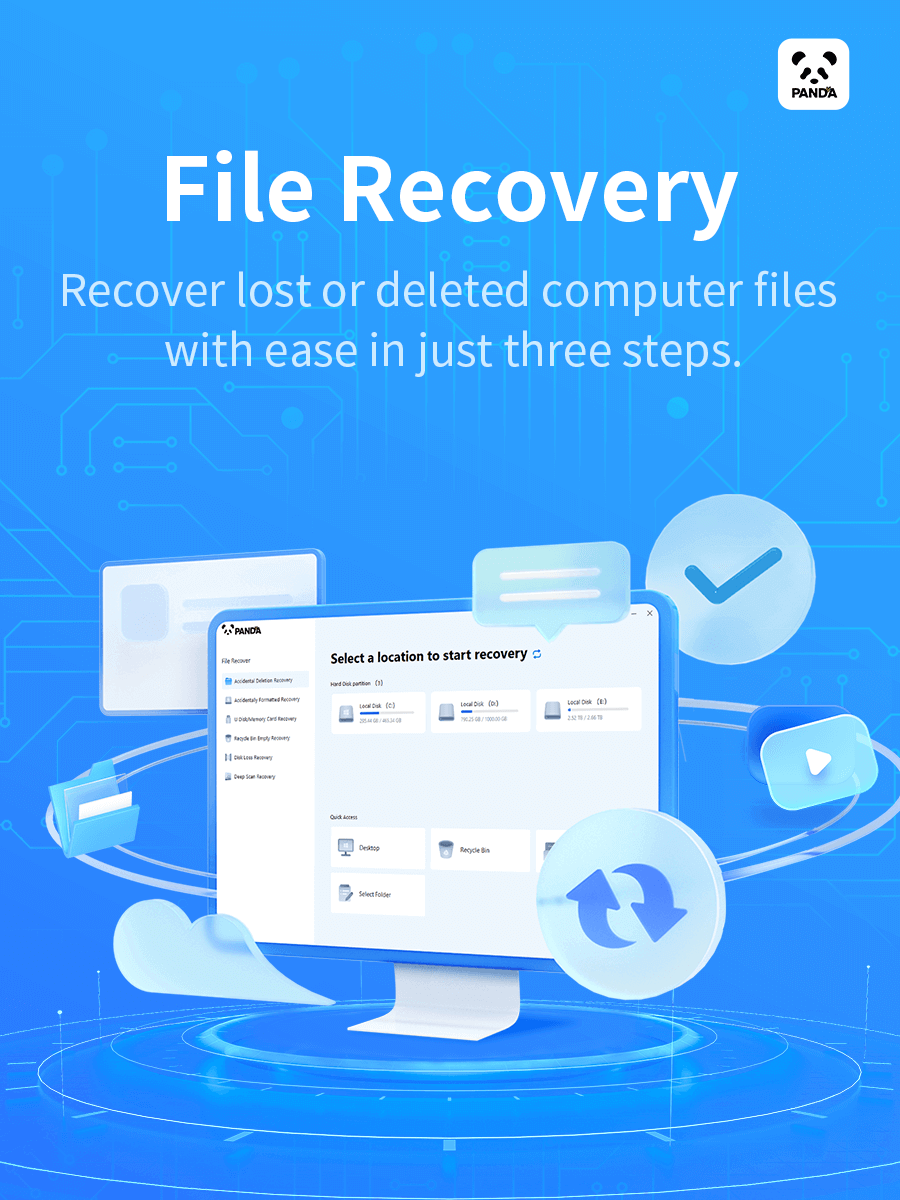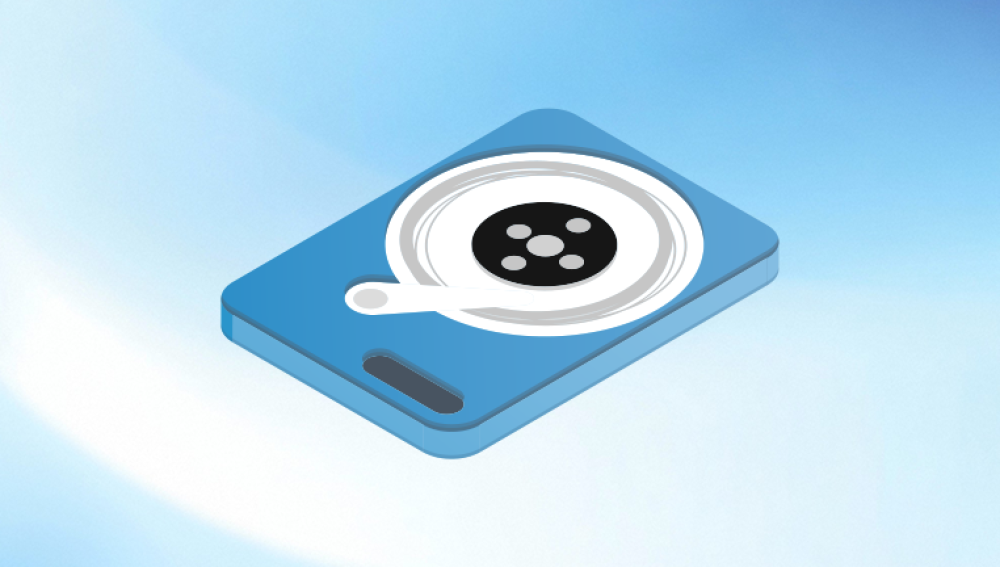Check the Physical and Connection Issues
Inspect the External Hard Drive: Examine the external hard drive for any signs of physical damage. Check if the casing is cracked, if there are any visible scratches on the disk surface (for HDDs), or if there are any loose components. If the hard drive has been dropped or subjected to physical trauma, it's more likely to have internal damage that may require professional repair.
Check the Connection: Ensure that the cable connecting the external hard drive to your computer is in good condition. Try using a different cable to rule out the possibility of a faulty cable. Also, check the USB port or other connection ports on both the hard drive and the computer. Make sure they are clean and free from debris. If possible, try connecting the hard drive to a different USB port or a different computer to see if the problem persists.

Data Recovery Software
Popular Data Recovery Tools
Drecov Data Recovery is a comprehensive and user-friendly software designed to help individuals and businesses recover lost, deleted, or corrupted files from various types of storage devices. It offers an effective solution for retrieving important data from hard drives, USB flash drives, SD cards, memory cards, and more. Whether you’ve lost files due to accidental deletion, system crashes, or formatting errors, Drecov Data Recovery can help you recover them quickly and efficiently.
Supporting a wide range of file formats, including documents, images, videos, audio files, and more, Drecov Data Recovery is versatile enough for everyday users as well as professional environments. The software’s powerful scanning algorithms can recover files that seem irretrievably lost, making it ideal for situations like accidental deletion or device malfunction.
Using Data Recovery Software
Download and Install: Download the chosen data recovery software from the official website. Make sure to download the version that is compatible with your operating system (Windows or Mac). Follow the installation instructions carefully.
Scan the External Hard Drive: Launch the software and select the external hard drive as the target drive to scan. The software will start scanning the drive for lost or deleted files. The scanning process may take some time depending on the size of the hard drive and the amount of data on it.
Preview and Recover: Once the scan is complete, the software will display a list of recoverable files. You can usually preview the files to check if they are the ones you need. Select the files you want to recover and choose a destination folder on your computer to save the recovered data. It's important not to save the recovered files back to the same external hard drive to avoid overwriting the existing data.
Restore from Backup
Check for Existing Backups: If you have been regularly backing up your data, restoring from a backup is often the easiest and most reliable method. Check if you have backups stored on another external drive, in the cloud, or on a network storage device.
Using Cloud Backup Services: Many cloud storage services like Google Drive, Dropbox, and Microsoft OneDrive offer backup and restore features. Log in to your cloud account, locate the backed-up data related to the external hard drive, and follow the restore instructions provided by the service. You can usually choose to restore specific files or the entire backup.
External Backup Drives: If you have an external backup drive, connect it to your computer. Open the backup software or utility that you used to create the backup. Look for options like "Restore" or "Recover" and follow the prompts to restore the data from the backup drive to your external hard drive or a new location on your computer.
File System Repair
Check File System Errors: In some cases, data loss or inaccessibility from an external hard drive can be due to file system errors. For Windows, you can use the CHKDSK utility. Open the Command Prompt as an administrator and type "chkdsk X: /f", where "X" is the drive letter of your external hard drive. This command will check for and fix any file system errors on the drive.
Repairing NTFS and FAT32 File Systems: If the file system is severely damaged, you may need to use more advanced tools. For NTFS file systems, tools like TestDisk and PhotoRec can be used to repair the file system and recover lost data. These tools are available for both Windows and Mac. For FAT32 file systems, similar tools can be used, and some data recovery software also has built-in features to repair FAT32 file system errors.
Mac File System Repair: On a Mac, you can use Disk Utility to repair the file system of an external hard drive. Open Disk Utility, select the external hard drive, and click on the "First Aid" button. Disk Utility will check for and repair any file system issues.
Professional Data Recovery Services
When to Consider Professional Help: If the above methods do not work, or if you suspect that there is serious physical or logical damage to the external hard drive, it may be time to consider professional data recovery services. This is especially true if the data on the hard drive is extremely important and irreplaceable, such as business-critical data, family photos, or legal documents.
Choosing a Reputable Service Provider: Look for data recovery companies with a good reputation and experience in the field. Check online reviews, ask for recommendations from friends or colleagues, and make sure the company has the necessary certifications and equipment. Some well-known data recovery companies have clean rooms and specialized tools to handle hard drives with physical damage.
The Data Recovery Process: Professional data recovery services usually start with an evaluation of the hard drive to determine the extent of the damage and the likelihood of successful data recovery. They will then use specialized techniques and tools to recover the data. This may involve opening the hard drive in a clean room (for HDDs) to repair or replace faulty components, or using advanced software to recover data from severely damaged file systems.
Preventive Measures for Data Loss
Regular Backups: Set up a regular backup schedule to ensure that your data is constantly protected. You can use a combination of cloud backup services and external backup drives. For example, you can back up important data to the cloud daily and make a weekly or monthly backup to an external hard drive.
Use of Data Protection Software: Install data protection software that can monitor and protect your data from accidental deletion, malware attacks, and other threats. Some software can also provide real-time backups and allow you to restore files to a previous state.
Proper Handling of External Hard Drives: Always safely eject the external hard drive before unplugging it from the computer. Avoid exposing the hard drive to extreme temperatures, moisture, and magnetic fields. When transporting the hard drive, use a protective case to prevent physical damage.




